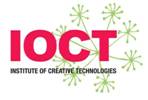| Administrative |
| Proposal |
| Module Handbook |
| Project Presentation |
| Submission Details |
| Writing Up Guidelines |

IOCT 5000 Major Project Proposal
|
1. The Researcher |
|||
|
First Name |
Last Name |
Student Number |
Email Address |
|
Fania |
Raczinski |
P09256386 |
fania@web.de |
|
2a. Working Title of the proposed investigation: (Acronyms must not be used) |
|
A passive interactive application for the BBC Big Screen in Leicester |
|
3a. Do you want to work towards an MA or an MSc? |
|
MSc |
|
3b. With reference to the IOCT 5000 Module Handbook (pp 2-4), please identify the knowledge and skills characteristics of your proposed research project that define it as either an MA or an MSc. |
|
In addition, an MSc may also involve;
|
|
3. Programme of Research (All acronyms must be defined) |
|
3.1 State the main aims of the investigation.
For my project I plan to create a passive interactive application for the BBC Big Screen in Leicester. This work will be based on video input streamed live from the space in front of the screen via a webcam on top of the screen. The video will then be modified and fed back to the screen, in order to allow some interactivity with the users of the screen to be implemented. Motion tracking techniques and color detection algorithms will be combined in an artistic way to achieve this.
The key aims of the project are:
|
|
3.2 How does the proposed research relate to previous published work in this field? (Appropriate references should be cited)
As well as their own content, the BBC has also used these screens as a platform for the public to submit their own work, an early example of this being the Cornerhouse project in Manchester, in which “artists’ film & video, interactive and participatory screen based projects and arts-based community moving image” were exhibited (Cornerhouse, 2009).
Using motion tracking in interactive applications is certainly not limited to the Big Screen as people continue to find new ways to immerse their audiences and users in digital content. One such example is GestureTek’s ScreenXtreme, an “immersive interactive display technology”, which uses “real-time body tracking and face tracking” to allow users of the screens to interact with the content. This type of tracking based technology, removing the need for input devices such as mice and keyboards, provides immersive and interactive experiences, which “capture a user’s attention and leave a lasting impression” (GestureTek, 2010).
|
|
3.3 Proposed methods of investigation, indicating research methodologies chosen and detailing their suitability for the investigation.
I will start the project by doing a literature review, in which I will be focusing on existing examples of interactive Big Screen projects, which make use of motion tracking technology. I hope that this will lead me to understand the theories and concepts of previous projects including how they have been implemented and what makes them successful or unsuccessful.
Following on from this I will begin developing my own prototype for the specification of the BBC Big Screen system. This development will be ongoing process and will involve continuous testing of the application.
As well as this the technical development of the project will be backed up by the ongoing refinement and artistic development of the application with the aim of producing a fun and interactive program.
|
|
3.4 In what format will your work be submitted? e.g. Dissertation, Exhibition and supporting documentation, Application and project report.
The output of the project will be a software application that should be able to run on the BBC Big Screen in Leicester, provided it is accepted by the BBC representative. As well as this I will also be submitting a project report documenting the progress of my planning and software development.
The final prototype will be running as an application in the IOCT lab on one of the large screens to provide easy access for marking by tutors. As well as this I will also be submitting the application to the BBC Big Screen representative, which could eventually lead to the public screening of the application on the system.
|
|
3.5 Key references (To be submitted in an academically recognised format)
BBC (2010). Big Screens [Online] BBC.co.uk. Available at:
Cornerhouse (2009). The Bigger Picture. [Online] Cornerhouse.org. Available at:
HMC Interactive (2007) Digital Grass. [Online] TwoFour Group. Available at:
|
Signed
___________________________________________________________